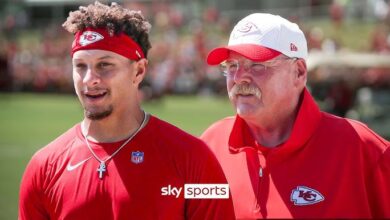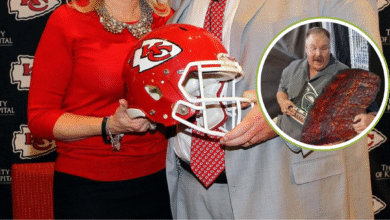Graham’s Sacrifice – 2018 Super Bowl Glory
OPINION: This article may contain commentary which reflects the author's opinion.
On February 4, 2018, the Philadelphia Eagles stood on the cusp of history in Super Bowl LII, facing the New England Patriots in a game that would define a city’s legacy. With 2:21 left in the fourth quarter, the score was 38-33, Eagles leading, but Tom Brady, the NFL’s greatest quarterback, was mounting a comeback. Then came the play that changed everything: defensive end Brandon Graham surged past Patriots lineman Shaq Mason, stripped the ball from Brady’s grasp, and secured the fumble recovery that sealed the Eagles’ 41-33 victory. It was the franchise’s first Super Bowl title, a moment etched in Philadelphia lore. But what fans didn’t know was the secret Graham carried—a career-threatening injury he hid to deliver that iconic play.
Graham, a 29-year-old veteran, was no stranger to adversity. Drafted 13th overall by the Eagles in 2010, he faced early criticism as a supposed bust. A microfracture knee surgery in 2010 sidelined him, and by 2017, he was still proving his worth. The 2017 season had been his best yet: 9.5 sacks, 47 tackles, and a relentless motor that earned him respect in Jim Schwartz’s defensive scheme. But in the NFC Championship Game against the Minnesota Vikings two weeks before the Super Bowl, Graham felt a sharp pain in his left shoulder during a tackle. An MRI revealed a partial rotator cuff tear, a diagnosis that could end a lineman’s season—or career.
The team’s medical staff urged surgery, warning that playing risked permanent damage. Graham, however, saw the Super Bowl as his destiny. “This is Philly’s moment,” he told his wife, Carlyne, in a late-night call. “I can’t sit this out.” Against medical advice, he kept the injury secret, confiding only in defensive line coach Chris Wilson. Graham taped his shoulder heavily, gritted through practice, and relied on painkillers to mask the agony. Teammates noticed him wincing during drills but attributed it to the grind of a long season. “Brandon’s always been a warrior,” said Fletcher Cox, his linemate. “We didn’t know how much he was hiding.”
In the days leading up to Super Bowl LII at U.S. Bank Stadium, Graham’s resolve was tested. The Patriots’ offensive line, anchored by Nate Solder and Mason, was formidable, and Brady’s quick release demanded split-second timing. Graham studied film obsessively, noticing Mason’s tendency to lean forward on pass plays. He shared the insight with Wilson, who devised a stunt that would let Graham loop inside for a clean shot at Brady. The plan required explosive power, but every practice rep sent fire through Graham’s shoulder. At night, alone in his hotel room, he prayed, not for glory, but for the strength to endure one more game.
Game day was a blur of adrenaline and pain. Graham played 42 snaps, more than any other Eagles defensive lineman, chasing Brady with a ferocity that belied his injury. By the fourth quarter, his shoulder was numb, the tape barely holding. With the game on the line, Schwartz called the stunt. Graham exploded off the line, his legs pumping, his injured shoulder screaming as he powered through Mason’s block. His right arm, the healthy one, swiped at Brady’s hand, dislodging the ball. As rookie Derek Barnett recovered the fumble, Graham collapsed, exhaustion and relief washing over him. The stadium erupted, but Graham’s mind was elsewhere—on the city he’d vowed to lift.
The aftermath was bittersweet. The Eagles’ victory sparked a euphoric parade down Broad Street, with two million fans chanting Graham’s name. He smiled through the celebration, hoisting the Lombardi Trophy, but the cost was steep. Post-game scans showed the rotator cuff tear had worsened, requiring a complex surgery that spring. Rehabilitation was grueling, with months of uncertainty about his future. Graham returned in 2018, but the injury sapped some of his burst, and he didn’t reach double-digit sacks again until 2022. Yet he never regretted his choice. “That moment was bigger than me,” he said in a rare 2024 interview, still guarded about the injury’s full extent.
Graham’s sacrifice resonated beyond the field. In Philadelphia, a city of underdogs, his story—though largely untold—became a quiet legend among teammates. Chris Long, a fellow lineman, learned of the injury months later and called Graham “the heart of that team.” The strip-sack, replayed endlessly on highlight reels, took on deeper meaning for those in the know. It wasn’t just a play; it was a testament to what one man would endure for his brothers, his city, his legacy.
The Eagles’ 2018 triumph owes much to Graham’s courage, but the man himself shuns the spotlight. He still lives in South Jersey, coaching youth football and mentoring young players like Nolan Smith. The shoulder, now scarred and stiff, is a private reminder of that February night. Fans may never grasp the full weight of his sacrifice, but those who do—teammates, coaches, family—see Graham as more than a hero. He’s the embodiment of Philly’s grit, a player who gave everything for a single, unforgettable play.
In 2024, as the Eagles chased another Super Bowl with a new generation, Graham, now 36, reflected on that moment. He keeps a photo from the parade on his mantel: him, Carlyne, and their kids, bathed in confetti. “Worth every second,” he says. For Philadelphia, the strip-sack wasn’t just a turnover—it was a gift, bought with a price only Brandon Graham could pay.



